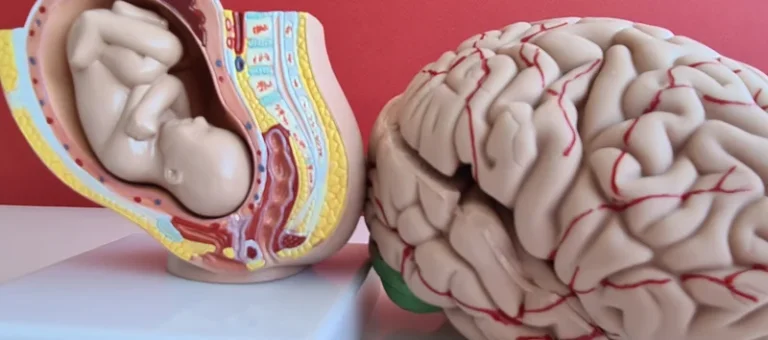Adult Children of Alcoholics ACOA and Family Roles

Not all individuals struggling with alcoholism experience the same patterns of behavior or respond to treatment in the same way. By recognizing the distinct subtypes of alcoholics, healthcare professionals and caregivers can provide targeted support that addresses the unique needs of each individual. Most likely what a person pictures when the term alcoholic is used, the chronic severe alcoholic subtype only accounts for about 9 percent of the entire US alcoholic population. A chronic severe alcoholic likely started drinking and struggling with alcohol-related issues and problematic drinking at a young age and is currently middle-aged.
Importance of Individualized Care
- More than 80 percent of this category experience acute withdrawal due to the persistent efforts to cut down, while more than 90 percent continue to drink despite it causing severe health or interpersonal issues.
- Sixty-six percent have sought help at some point, making them the group most likely to have done so.
- Avenues Recovery have outlined each subtype within this article, so you can learn about them all and identify where you or a loved one may fit in.
- If you or someone you know is struggling with alcohol use disorder, it is crucial to seek professional help.
Effective intervention strategies for young adults often involve a combination of approaches. Education about the risks of heavy drinking is crucial, as many young adults underestimate the potential consequences of their drinking habits. Peer support programs can be particularly effective, as can interventions that focus on developing healthy coping skills and alternative ways to socialize and have fun without alcohol. This type is defined by the physical complications that arise from heavy drinking, even in the absence of physical or psychological dependence. Beta alcoholics may not feel a compelling need to drink, but their pattern of heavy alcohol consumption leads to health problems such as liver disease, gastritis, or neuropathy. There are also numerous resources available online and in-person that provide information on alcoholism, treatment options, and coping strategies.
Syndrome Model of Addiction: A Comprehensive Approach to Understanding Substance Abuse
This group also tends to spend significant amounts of time recovering from alcohol, and many experience reduced activities due to drinking. This group also sees the highest rate of emergency room visits due to drinking. Get professional help from an online addiction and mental health counselor from BetterHelp. Alcohol withdrawal can begin within hours of ending a drinking session. While cirrhosis scars from excessive drinking are irreversible, quitting alcohol and leading a healthier lifestyle can help your liver heal from alcohol-related liver disease.
- But no matter your age, status, family, or subtype, alcoholism can create long-term problems that damage your health and relationships.
- This subtype is comprised of high-functioning alcoholics who are able to maintain relationships and careers despite their alcohol addiction.
- The terms “alcoholism” and “alcoholic” carry a heavy stigma that can discourage individuals from seeking help.
Ways to Treat Risk Factors of Alcoholism
The impact of alcoholism on relationships and daily life can be significant, regardless of the subtype. Alcoholics may experience strained relationships with family members, friends, and colleagues. Their alcohol dependence can lead to decreased productivity at work or school, financial difficulties, and impaired decision-making abilities. Alcohol use disorder exists on a spectrum, ranging from mild to severe. The severity of alcohol use disorder is determined by the number of symptoms an individual exhibits, with mild cases having fewer symptoms and severe cases having a greater number of symptoms.
Addiction Treatment Plans: Crafting Personalized Paths to Recovery

One of our understanding, dedicated advisors will contact you about your options. Reach out to a treatment provider for free today for immediate assistance. Young Adult and Young Antisocial Alcoholics presently account for about half of the alcoholism in the United States. About a third of the members of this group seeks help; when they do, they prefer self-help groups and detox programs. In the next section, we provide more detailed traits of each of the five types. Avenues Recovery is a community-based drug and alcohol rehabilitation center with locations across the United States.
Intermediate Familial Alcoholics

They also have high probability of suffering from antisocial personality disorder, depression, generalized anxiety disorder, and bipolar disorder. This group also suffers from high rates of cigarette, marijuana, and cocaine addiction. People in this subtype begin drinking at roughly 15 years of age, developing a dependency at about 29. Seventy-seven percent have close family members with alcoholism, the highest percentage of any subtype. Nearly 50% experience antisocial personality disorder, the second-highest rate of any subtype.
- Many also suffer from other mental illnesses, including major depression, bipolar disorder, social phobias and obsessive-compulsive personality disorder.
- The best type of treatment will depend on your treatment needs and individual circumstances.
- They began drinking the earliest of all five types, at around 15 years-old, with the average age of dependency starting at age 18.
- That’s because they can balance their drinking with their personal and professional life.

With the lowest employment rate and the highest divorce and separation rates, this group has the time to drink more than any other. However, despite that, their overall intake is less than the young antisocial subtype. BetterHelp offers affordable mental health care via phone, video, or live-chat. This post discusses five distinct categories of people who suffer from alcoholism. By exploring each category in depth, you’ll better understand the complexities surrounding alcoholism.

This creates a risk that neither the addict nor those around them will recognize the severity of their situation, preventing them from seeking treatment. It is essential to realize that the reality of alcoholism is very different from what many imagine and that there are different types of alcoholics. These treatment options can help you or your loved one take the first step toward sobriety and live a healthier, happier 5 types of alcoholics life. If you are looking for the right treatment option for yourself or someone you know, it is important to speak with a doctor or mental health professional about the best action plan. Each type has symptoms and behaviors that separate themselves from each other. While understanding the different types of alcoholism is crucial, effective treatment is equally important for navigating this substance use disorder.
The Road to Recovery: Recognizing, Addressing, and Overcoming Alcohol Addiction
By understanding these differences, treatment providers can develop personalized plans that cater to the unique needs of each individual. Alcoholism is a complex and multifaceted condition https://ecosoberhouse.com/ that affects individuals from all walks of life. It is essential to have a clear understanding of alcoholism to address its impact on individuals, families, and society as a whole.


